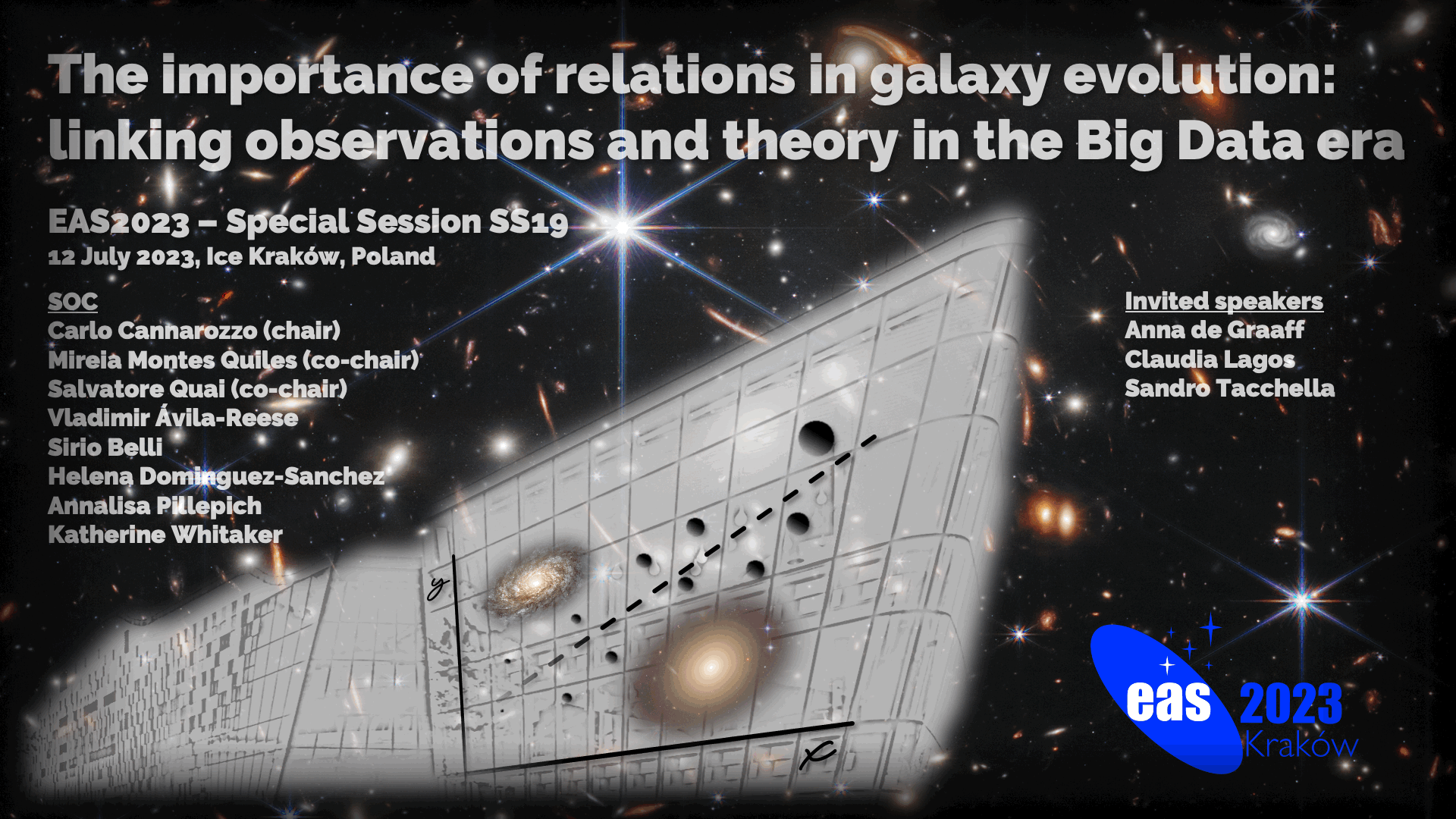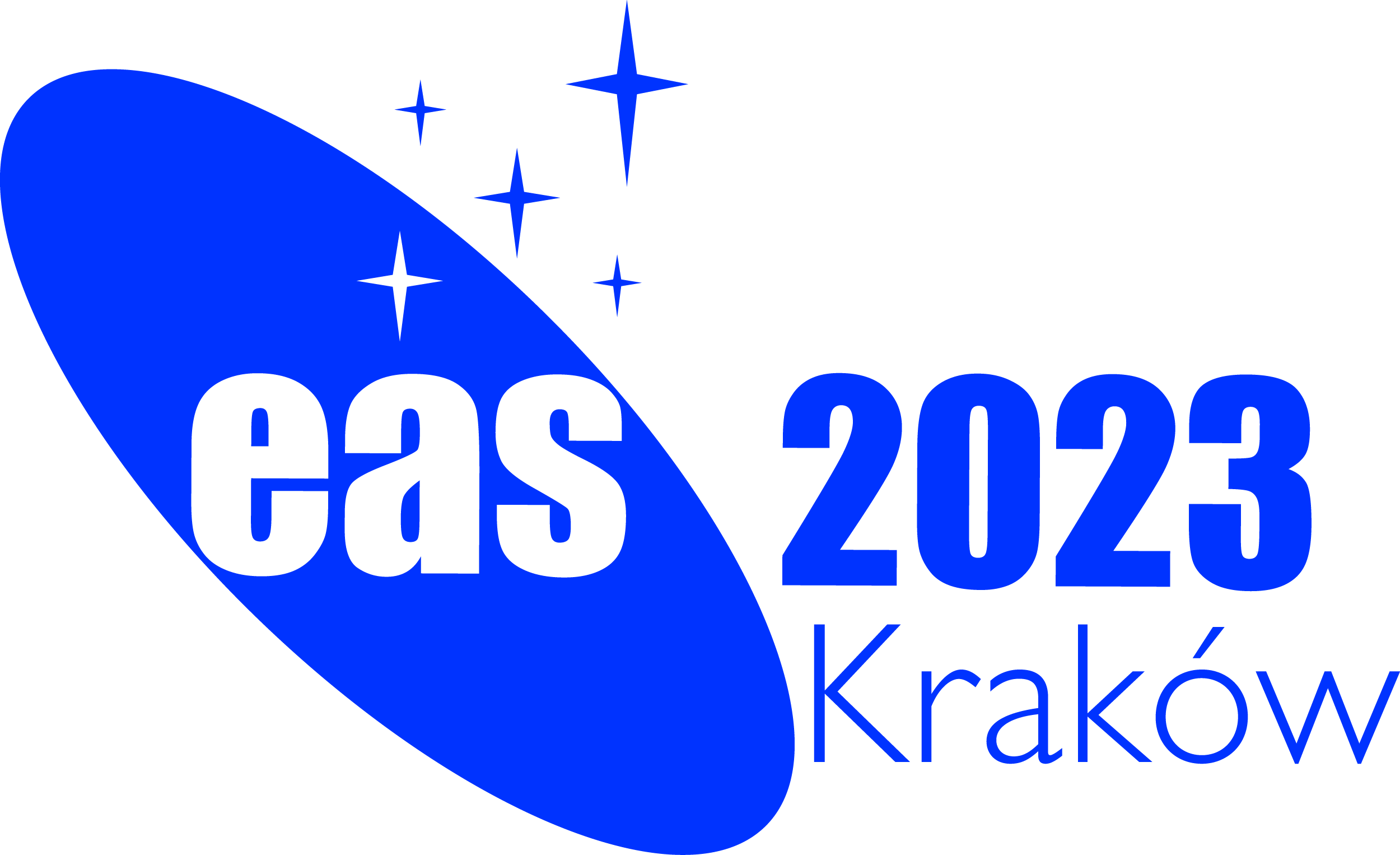Special Session SS19
12 July 2023
The importance of relations in galaxy evolution: linking observations and theory in the Big Data era

Aims and scope
In astrophysics, correlations among physical properties lead us to uncover the fundamental physical processes behind them. Galaxy formation, indeed, is a non-linear and complex process in which multiple mechanisms are responsible for self-regulating star formation and setting up their observed properties. Remarkably, strong relationships are found among key physical properties, such as stellar mass (or luminosity), size, circular velocity, velocity dispersion, gas and stellar metallicities, and many others.
These relations are observed in different environments and at different cosmic times, thus suggesting a common path of formation and evolution of galaxies, even though they act differently for early- and late-type galaxies. Hence, understanding the origin of these correlations has a pivotal role in constraining theories on how different galaxies assemble through cosmic history.
The new and upcoming surveys (e.g., MOONS, WEAVE, LSST) and facilities (e.g., ALMA; Rubin; SKA; Euclid; JWST; Nancy Grace Roman Space Telescope) will allow us to explore galaxy properties farther and farther in the Universe, significantly enhancing our view on how these are linked to each other. The intricate web of possible connections among physical properties and the enormous amounts of data will pose a problem to traditional analysis. Therefore, it is essential to take advantage of the novel statistical and machine-learning techniques which are fundamental to handling huge amounts of data and solving complex problems.
Dissecting and deciphering the origin of relationships among physical properties of galaxies is crucial to sharpen our understanding of galaxy formation and evolution.
In this session, we aim to address critical issues concerning these relations, both from the observational and theoretical points of view, with the objective to provide answers to some fundamental questions:
- How do relations evolve through cosmic time?
- What is the link between scaling relations in late-type and early-type galaxies?
- How can the next generations of telescopes and surveys help us to better understand the origin of these correlations?
- Do simulations reproduce the observed relations? What can they tell us about the underlying physics of galaxies?
Programme
- Scaling relations in early- and late-type galaxies
- Theory and simulations
- Current and upcoming surveys
Together with 3 review talks (25 minutes + 5 minutes for questions) given by the invited speakers, there will be two types of talks during the special session:
- Long talk (12 minutes + 3 minutes for questions);
- Short talk (4 minutes + 1 minute for questions).
Invited speakers
- Anna De Graaff (Max-Planck-Institut fur Astronomie, Germany)
- Claudia Lagos (International Centre for Radio Astronomy Research, University of Western Australia, Australia)
- Sandro Tacchella (Department of Physics, Cavendish Laboratory & Kavli Institute for Cosmology, University of Cambridge, England)
Scientific organisers
- Carlo Cannarozzo (chair, Instituto de Astronomía, Universidad Nacionál Autonoma de México, Mexico)
- Mireia Montes (co-chair, Instituto de Astrofísica de Canarias, Spain)
- Salvatore Quai (co-chair, Alma Mater Studiorum Università di Bologna, Italy)
- Vladimir Ávila-Reese (Instituto de Astronomía, Universidad Nacionál Autonoma de México, Mexico)
- Sirio Belli (Alma Mater Studiorum Università di Bologna, Italy)
- Helena Domínguez-Sánchez (Centro de Estudios de Física del Cosmos de Aragón, Spain)
- Annalisa Pillepich (Max-Planck-Institut fur Astronomie, Germany)
- Katherine Whitaker (Astronomy Department, University of Massachusetts
Amherst & Cosmic Dawn Center, Denmark
Contact
For any enquiries, please contact any of the chairs:
Updated on Fri Jul 07 11:25:34 CEST 2023
|

 A power cut will shut down all EAS services on Tuesday, 10 January 2017 starting at 7:30 CET.
A power cut will shut down all EAS services on Tuesday, 10 January 2017 starting at 7:30 CET.


